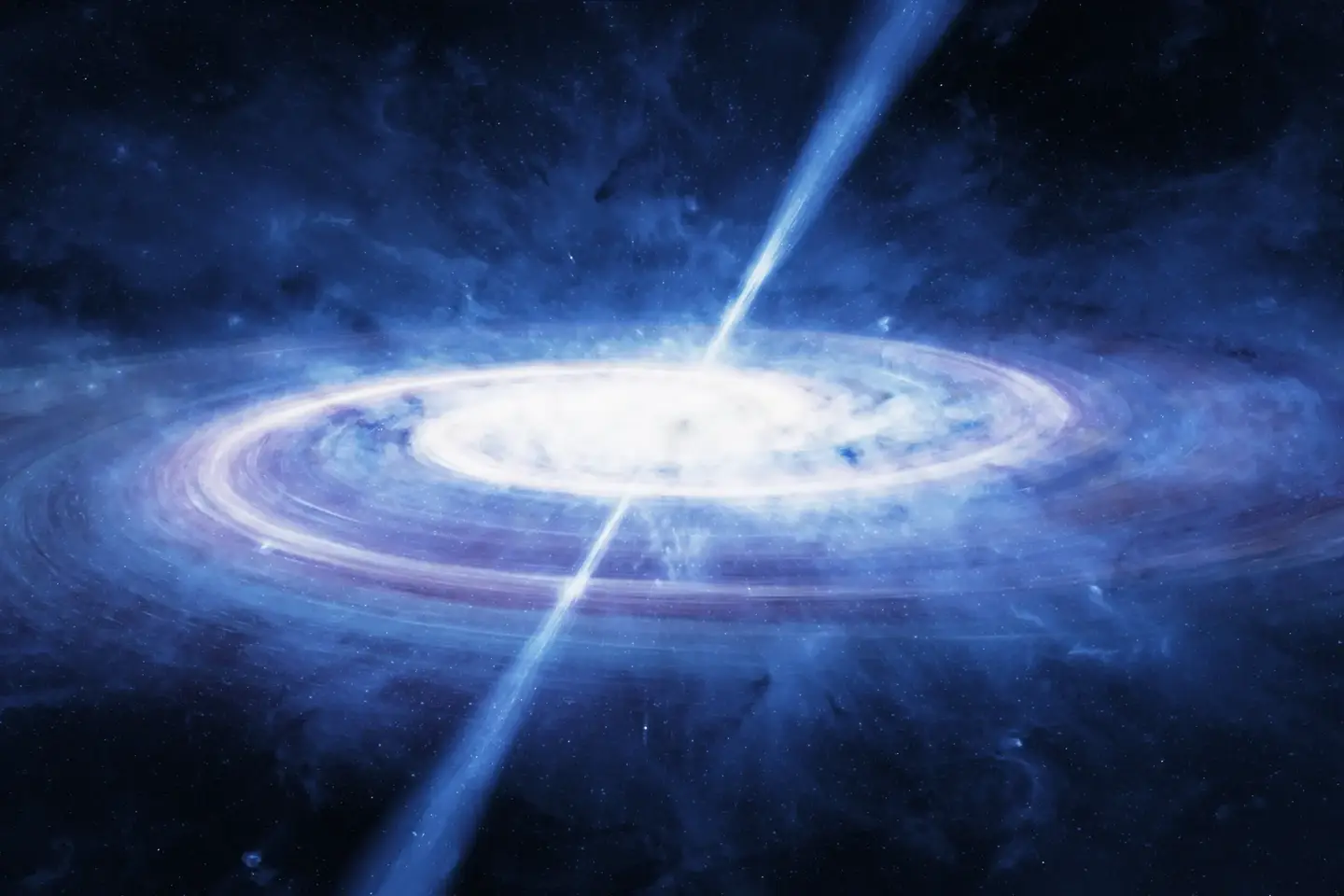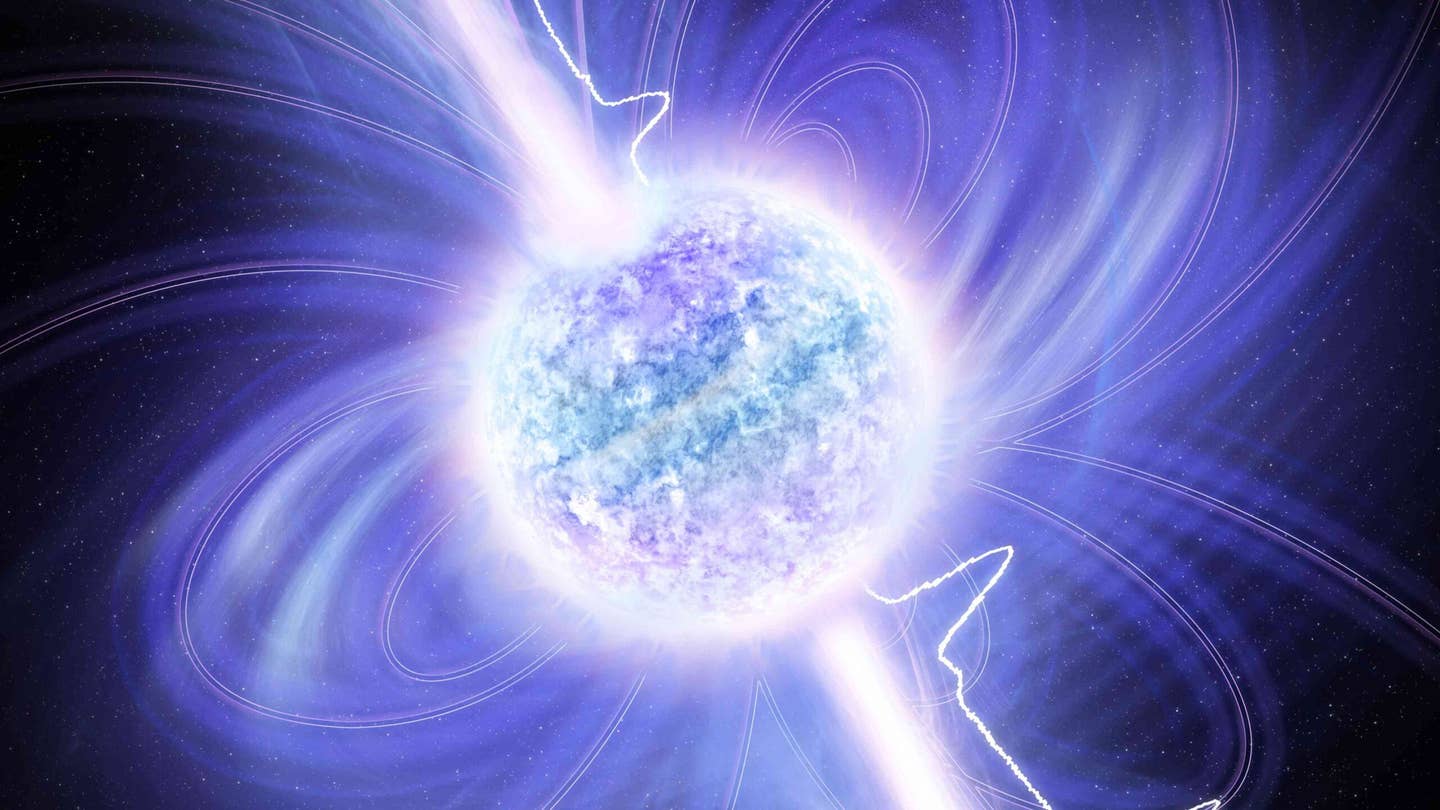Cosmic first: Astronomers observed real-time formation of black hole jets
Scientists observe a black hole launching a plasma jet in real time, revealing unprecedented X-ray fluctuations and AGN dynamics.

For the first time, astronomers have captured the formation of a black hole’s plasma jet in real time, reshaping our understanding of AGNs. (CREDIT: CC BY-SA 4.0)
A remarkable black hole, located 270 million light-years away in the Draco constellation, has become the center of groundbreaking discoveries. Known as 1ES 1927+654, this supermassive black hole has exhibited unique and puzzling behavior, leading scientists to new insights about active galactic nuclei (AGN).
The journey began in 2018 when a dramatic optical, ultraviolet, and X-ray outburst caught astronomers’ attention. Now, observations have revealed features such as a newly launched plasma jet and millihertz X-ray oscillations, offering clues about black hole activity.
The AGN's journey has been a captivating one. Its optical outburst in late 2017 was identified by the All-Sky Automated Survey for Supernovae. Within months, the black hole’s brightness increased a hundredfold.
X-ray studies revealed unprecedented behavior: the complete destruction and eventual rebuilding of its X-ray corona in 2019 and 2020. This transformation defied traditional models, which assumed that such structural changes in black holes occur over millennia, not within human observational timescales.
Before 2023, the black hole appeared relatively quiet in radio frequencies. However, in February 2023, a powerful radio flare began. The flare’s exponential rise led to radio emissions 60 times the previous levels, maintaining this intensity for over a year.
High-resolution observations with the Very Long Baseline Array (VLBA) revealed new structures—jets of ionized gas extending about 0.15 parsecs on either side of the black hole. This formation suggests a relativistic bipolar outflow and hints at jet-driven shocks contributing to observed X-ray increases.
These changes offer new perspectives on how AGNs interact with their surroundings. Historically, radio-quiet AGNs like 1ES 1927+654 were not considered capable of launching such powerful jets. This discovery challenges the conventional classifications of AGNs, emphasizing the importance of continued monitoring and the development of advanced observational tools.
Astronomers employed state-of-the-art tools, including the National Radio Astronomy Observatory’s Astronomical Image Processing System (AIPS) and CASA software, to process the data. High-resolution images of the AGN’s radio activity showed consistent improvements in image clarity following advanced calibration techniques.
For instance, phase-only and amplitude self-calibration iterations refined the data’s accuracy, and these methods confirmed the presence of the jet structure.
Key observations from VLBA and European VLBI Network (EVN) telescopes demonstrated that the radio flare was consistent with jets breaking out from obscuring gas. Measurements of the jet’s flux and position over time, detailed in the resulting images, have been critical to understanding the source’s evolution.
Eileen Meyer, an associate professor at the University of Maryland Baltimore County, emphasized the significance of these observations. “The launch of a black hole jet has never been observed before in real time,” she said. Meyer presented the findings at a meeting of the American Astronomical Society, further exploring how this discovery reshapes our understanding of black hole behavior.
Related Stories
The VLBA’s role in these observations was pivotal. This array of ten radio telescopes spread across the United States allows astronomers to achieve an angular resolution equivalent to seeing a quarter on the Moon’s surface. Such precision revealed the fine details of the jet’s structure and its rapid evolution, enabling scientists to measure the flux density and separation of its components over time.
Another groundbreaking finding involves rapid X-ray oscillations detected by NASA’s XMM-Newton mission. Between 2022 and 2024, the black hole’s X-ray brightness fluctuated by 10% every few minutes.
These quasiperiodic oscillations suggest the presence of an object orbiting near the black hole’s event horizon. As the object spiraled inward, its orbital period shortened from 18 to 7 minutes, indicating it was moving at half the speed of light.
Megan Masterson, a doctoral candidate at the Massachusetts Institute of Technology, explained that the oscillations might result from a low-mass white dwarf orbiting the black hole. The dwarf’s mass loss could stabilize its inward motion, preventing it from plunging into the black hole. This stabilization challenges traditional expectations, as objects nearing a black hole are generally thought to follow a one-way path toward destruction.
The team’s findings, published in the journal, The Astrophysical Journal Letters, suggest that this white dwarf, stripped of some of its matter, may be emitting gravitational waves detectable by the Laser Interferometer Space Antenna (LISA), a future mission by the European Space Agency and NASA. Such a detection would confirm the model and open a new window into studying supermassive black holes and their companions.
These oscillations also hold broader implications. They highlight the complex interplay between matter and gravitational forces near a black hole’s event horizon. The precise timing of these fluctuations provides a unique opportunity to study the black hole’s accretion processes and the environment immediately surrounding it.
The ongoing behavior of 1ES 1927+654 challenges long-held theories about AGN. Traditionally, the unification model for AGNs assumes that structural changes occur over thousands of years. However, this black hole has demonstrated that dramatic transitions can happen in real-time.
Observations suggest that magnetic flux inversions in its accretion disk may have triggered the outburst, disrupting existing structures and enabling jet formation.
The new plasma jet also raises questions about the conditions necessary for such outflows. Previously, only a fraction of black holes were thought capable of producing jets. Scientists hypothesize that the jet’s appearance followed an X-ray flare when the hot gas surrounding the black hole dissipated. This sequence allowed the jet to emerge clearly in radio wavelengths.
The insights gained from this AGN’s behavior will drive further research. High-resolution radio imaging, continued X-ray monitoring, and gravitational wave studies will deepen our understanding of black hole dynamics. Future publications by international teams aim to detail the evolution of the jet and its interaction with surrounding material.
Advances in observational techniques are expected to uncover even more about AGNs and their dynamic nature. Instruments like the Event Horizon Telescope, which captured the first image of a black hole, and LISA will complement these efforts. Together, they promise to provide a multidimensional view of black holes, bridging gaps in our knowledge.
The discoveries surrounding 1ES 1927+654 represent a leap forward in black hole research. They highlight the interplay between high-energy phenomena and relativistic jets while uncovering mechanisms driving AGN variability. For astronomers, this case study provides a rare opportunity to witness and analyze processes that have eluded understanding for decades.
As scientists prepare for upcoming missions like LISA, the potential to detect gravitational waves from systems like this could unlock even more secrets about the universe. With 1ES 1927+654 as a model, the future of astrophysics promises to be brighter and more dynamic than ever. These observations not only deepen our understanding of black holes but also pave the way for new technologies and methodologies in space exploration.
The real-time observation of these phenomena emphasizes the importance of collaborative, multi-institutional efforts. It showcases how combining data from radio, X-ray, and gravitational wave observatories can produce groundbreaking results.
This integrated approach is key to unraveling the mysteries of the cosmos and pushing the boundaries of what humanity knows about the universe.
Note: Materials provided above by The Brighter Side of News. Content may be edited for style and length.
Like these kind of feel good stories? Get The Brighter Side of News' newsletter.
Joseph Shavit
Head Science News Writer | Communicating Innovation & Discovery
Based in Los Angeles, Joseph Shavit is an accomplished science journalist, head science news writer and co-founder at The Brighter Side of News, where he translates cutting-edge discoveries into compelling stories for a broad audience. With a strong background spanning science, business, product management, media leadership, and entrepreneurship, Joseph brings a unique perspective to science communication. His expertise allows him to uncover the intersection of technological advancements and market potential, shedding light on how groundbreaking research evolves into transformative products and industries.



